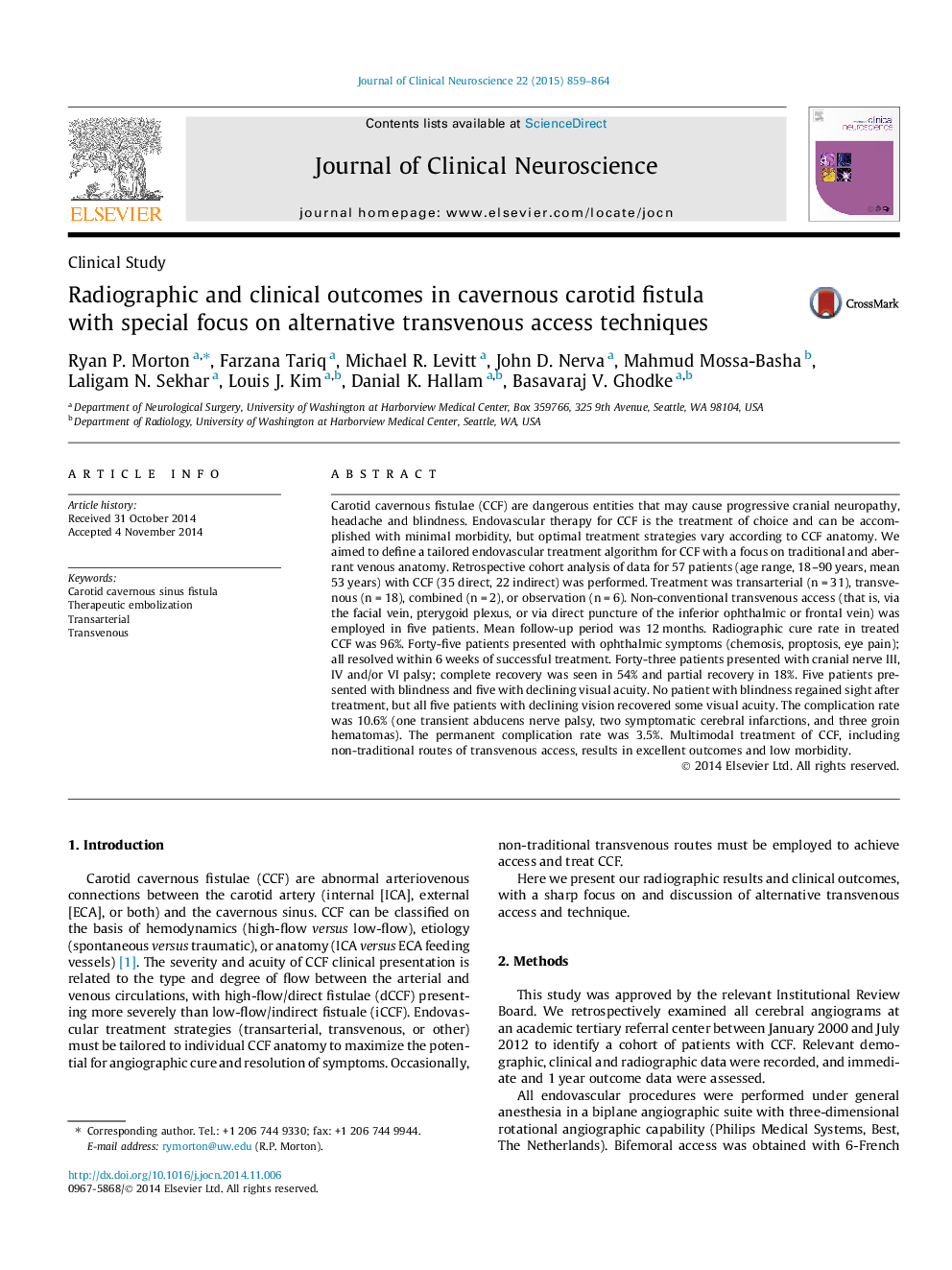| Article ID | Journal | Published Year | Pages | File Type |
|---|---|---|---|---|
| 3059287 | Journal of Clinical Neuroscience | 2015 | 6 Pages |
Carotid cavernous fistulae (CCF) are dangerous entities that may cause progressive cranial neuropathy, headache and blindness. Endovascular therapy for CCF is the treatment of choice and can be accomplished with minimal morbidity, but optimal treatment strategies vary according to CCF anatomy. We aimed to define a tailored endovascular treatment algorithm for CCF with a focus on traditional and aberrant venous anatomy. Retrospective cohort analysis of data for 57 patients (age range, 18–90 years, mean 53 years) with CCF (35 direct, 22 indirect) was performed. Treatment was transarterial (n = 31), transvenous (n = 18), combined (n = 2), or observation (n = 6). Non-conventional transvenous access (that is, via the facial vein, pterygoid plexus, or via direct puncture of the inferior ophthalmic or frontal vein) was employed in five patients. Mean follow-up period was 12 months. Radiographic cure rate in treated CCF was 96%. Forty-five patients presented with ophthalmic symptoms (chemosis, proptosis, eye pain); all resolved within 6 weeks of successful treatment. Forty-three patients presented with cranial nerve III, IV and/or VI palsy; complete recovery was seen in 54% and partial recovery in 18%. Five patients presented with blindness and five with declining visual acuity. No patient with blindness regained sight after treatment, but all five patients with declining vision recovered some visual acuity. The complication rate was 10.6% (one transient abducens nerve palsy, two symptomatic cerebral infarctions, and three groin hematomas). The permanent complication rate was 3.5%. Multimodal treatment of CCF, including non-traditional routes of transvenous access, results in excellent outcomes and low morbidity.
